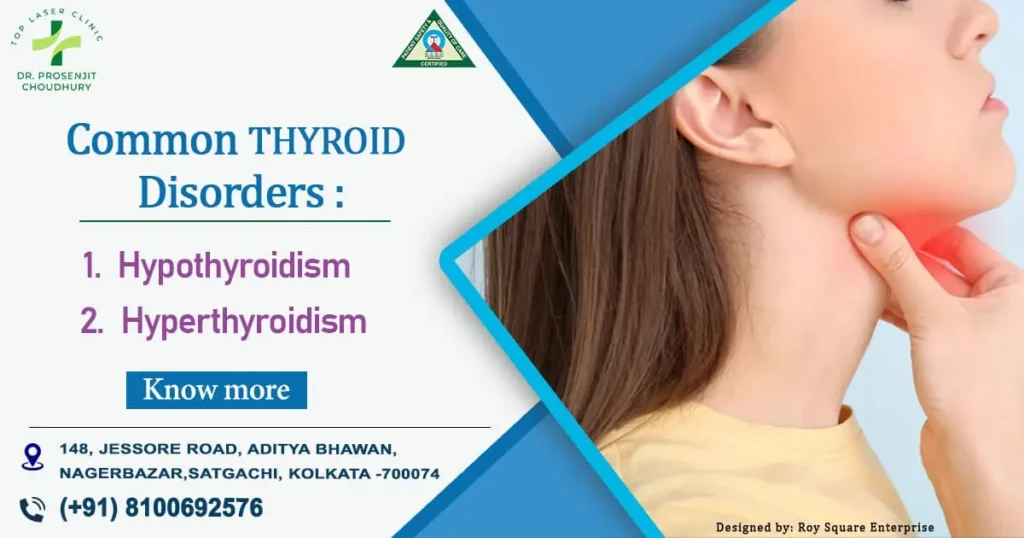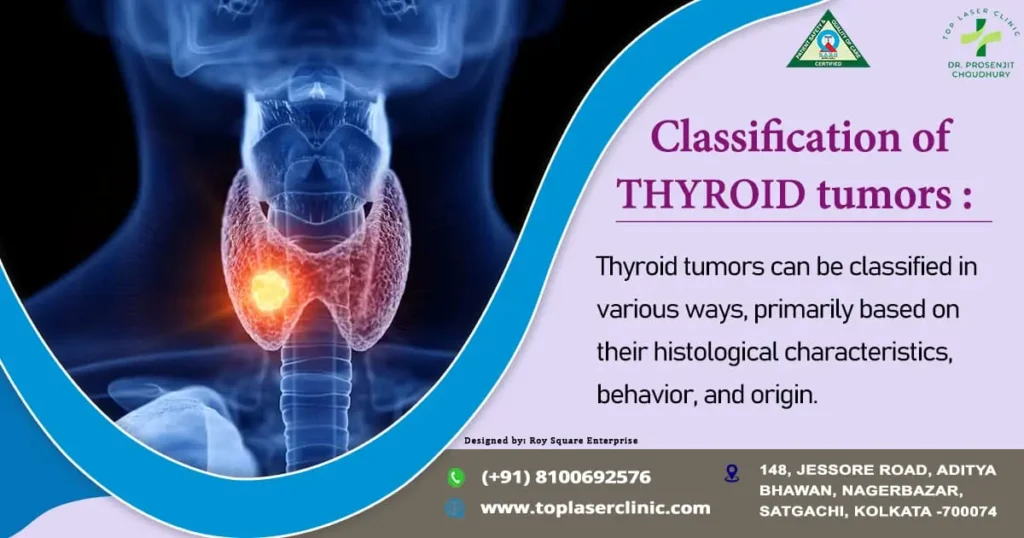Thyroid

The thyroid gland, a small butterfly-shaped organ located in the front of your neck, might not seem like a big deal at first glance. However, its role in regulating various bodily functions is paramount. From metabolism to mood, the thyroid plays a vital role in keeping our bodies functioning optimally. Let’s discuss the intricate workings of the thyroid gland, its functions, common disorders, and how to maintain thyroid health.
Anatomy and Function:
The thyroid gland produces hormones—chiefly thyroxine (T4) and triiodothyronine (T3)—that influence metabolism, growth, and development. These hormones are released into the bloodstream and transported throughout the body, where they regulate cellular metabolism, ensuring that cells perform their functions efficiently.
Regulating Metabolism:
Metabolism refers to the body’s process of converting food into energy. The thyroid hormones T3 and T4 play a crucial role in this process. They control how quickly the body burns calories and uses energy, affecting weight management and energy levels. When thyroid hormone levels are low (hypothyroidism), metabolism slows down, leading to symptoms like weight gain, fatigue, and cold intolerance. Conversely, when thyroid hormone levels are high (hyperthyroidism), metabolism speeds up, resulting in symptoms such as weight loss, increased heart rate, and heat intolerance.
Common Thyroid Disorders:
Despite its small size, the thyroid gland can cause significant health issues when its function is disrupted. Hypothyroidism and hyperthyroidism are two prevalent thyroid conditions.
- Hypothyroidism: This disorder is brought on by insufficient hormone production by the thyroid gland. This condition occurs when the thyroid gland does not produce enough hormones. Common causes include autoimmune thyroiditis (Hashimoto’s thyroiditis), iodine deficiency, thyroid surgery, or radiation therapy. Symptoms may include fatigue, weight gain, constipation, dry skin, and depression.
- Hyperthyroidism: In contrast, hyperthyroidism is characterized by an overproduction of thyroid hormones. The most frequent cause of hyperthyroidism is an autoimmune condition called Graves’ disease. Other causes include thyroid nodules and inflammation of the thyroid gland (thyroiditis). Anxiety, tremors, rapid heartbeat, weight loss, and heat intolerance are possible symptoms.
Maintaining Thyroid Health:
While some thyroid disorders are genetic or unavoidable, certain lifestyle factors can influence thyroid health:
- Nutrition: Ensure adequate intake of iodine, a crucial nutrient for thyroid hormone production. Good dietary sources include iodized salt, seafood, dairy products, and seaweed. Additionally, consume a balanced diet rich in fruits, vegetables, lean proteins, and whole grains to support overall health.
- Regular Exercise: Engage in regular physical activity to support metabolism and overall well-being. Aim for a combination of aerobic exercise, strength training, and flexibility exercises for optimal health benefits.
- Stress Management: The thyroid can be adversely affected by long-term stress. Practice stress-reducing techniques such as meditation, yoga, deep breathing exercises, or hobbies that you enjoy.
- Regular Check-ups: Schedule regular appointments with your healthcare provider for thyroid screening and monitoring, especially if you have a family history of thyroid disorders or experience symptoms of thyroid dysfunction.
How to control thyroid during pregnancy naturally
Maintaining optimal thyroid function during pregnancy is crucial for both the mother’s health and the baby’s development. Here are some natural strategies to help control thyroid function during pregnancy:
- Monitor Iodine Intake: Iodine is essential for thyroid hormone production. During pregnancy, iodine requirements increase. Ensure you are consuming iodine-rich foods such as iodized salt, seaweed, seafood, dairy products, and eggs. However, avoid excessive iodine intake, as it can also disrupt thyroid function. Consult with a healthcare provider to determine the appropriate iodine intake for your needs.
- Eat a Balanced Diet: Consuming a well-balanced diet rich in fruits, vegetables, whole grains, lean proteins, and healthy fats provides essential nutrients to support thyroid health. Include selenium-rich foods like Brazil nuts, eggs, sunflower seeds, and seafood, as selenium is necessary for thyroid hormone synthesis and metabolism.
- Manage Stress: Pregnancy can be a stressful time, but chronic stress can negatively impact thyroid function. Practice stress management techniques such as deep breathing exercises, meditation, yoga, or tai chi to promote relaxation and reduce stress levels.
- Get Adequate Sleep: Quality sleep is essential for overall health, including thyroid function. Try to get between seven and nine hours of sleep every night. Establish a calming night-time routine, minimize screen time before bed, and make sure your sleeping space is cozy and sleep-promoting.
- Stay Active: Regular exercise during pregnancy can support thyroid function and overall well-being. Engage in low-impact activities such as walking, swimming, prenatal yoga, or gentle stretching exercises. Be sure to speak with your doctor before beginning a new workout program while pregnant.
- Avoid Environmental Toxins: Limit exposure to environmental toxins that can disrupt thyroid function, such as certain chemicals found in plastics, pesticides, and household cleaning products. Choose natural and organic alternatives whenever possible, and ventilate your living space to reduce indoor air pollution.
- Supplement Wisely: Discuss with your healthcare provider about prenatal supplements, including prenatal vitamins containing iodine and other essential nutrients. Avoid excessive supplementation, especially with iodine and selenium, as high doses can be harmful.
- Regular Thyroid Monitoring: Keep regular appointments with your healthcare provider for thyroid function testing during pregnancy. Thyroid hormone levels can fluctuate during pregnancy, so monitoring is essential to ensure optimal thyroid function and adjust treatment if necessary.
- Consult with a Healthcare Provider: If you have a pre-existing thyroid condition or suspect thyroid dysfunction during pregnancy, consult with a healthcare provider experienced in managing thyroid disorders in pregnant women. They can provide personalized guidance and treatment options tailored to your specific needs.
By incorporating these natural strategies and working closely with your healthcare provider, you can support optimal thyroid function during pregnancy and promote a healthy outcome for both you and your baby.
Classification of thyroid tumors:

Thyroid tumors can be classified in various ways, primarily based on their histological characteristics, behavior, and origin. Here is a classification of thyroid tumors according to these factors:
- Histological Classification:
• Benign (Non-Cancerous) Tumors:
• Adenomas: These are benign tumors derived from thyroid follicular cells. They may be further classified based on their specific cell types, such as follicular adenomas and oncocytic (Hürthle cell) adenomas.
• Colloid (Thyroid) Nodules: These are non-cancerous nodules characterized by the accumulation of colloid within thyroid follicles.
• Malignant (Cancerous) Tumors:
• Differentiated Thyroid Carcinomas: These include papillary thyroid carcinoma (PTC), follicular thyroid carcinoma (FTC), and Hürthle cell carcinoma. They arise from thyroid follicular cells and typically retain some degree of thyroid cell differentiation.
• Medullary Thyroid Carcinoma (MTC): MTC originates from parafollicular cells (C cells) of the thyroid gland, which produce calcitonin. It may occur sporadically or as part of multiple endocrine neoplasia (MEN) syndromes.
• Anaplastic Thyroid Carcinoma: This is an aggressive and undifferentiated thyroid cancer that arises from thyroid follicular cells. It tends to grow rapidly and has a poor prognosis.
• Thyroid Lymphoma: Lymphoma involving the thyroid gland is rare but can occur. It may be primary (originating in the thyroid gland) or secondary (resulting from metastasis from other sites).
• Thyroid Sarcoma: Sarcomas of the thyroid gland are extremely rare and typically carry a poor prognosis. - Behavioral Classification:
• Non-Invasive (Encapsulated) Tumors: Some thyroid tumors, particularly adenomas and well-differentiated carcinomas, may remain confined within a fibrous capsule and do not invade surrounding tissues.
• Invasive Tumors: Malignant thyroid tumors can invade surrounding tissues, such as the thyroid capsule, adjacent structures (e.g., trachea, esophagus), and lymph nodes. - Origin Classification:
• Primary Thyroid Tumors: These tumors originate within the thyroid gland itself, whether benign or malignant.
• Secondary (Metastatic) Thyroid Tumors: Tumors originating from other sites in the body (e.g., breast, lung, kidney) can metastasize to the thyroid gland. - Genetic Classification:
• Certain genetic mutations and alterations are associated with specific types of thyroid tumors. For example, mutations in the BRAF gene are commonly found in papillary thyroid carcinoma, while mutations in the RET gene are associated with medullary thyroid carcinoma.
Understanding the classification of thyroid tumors is essential for accurate diagnosis, treatment planning, and prognostication. It guides healthcare providers in determining the appropriate management strategies tailored to each patient’s specific tumor characteristics and clinical situation.
What is Lateral Aberranr Thyroid?
A lateral aberrant thyroid, also known as an ectopic thyroid gland, is a rare anatomical variation where thyroid tissue is found outside its typical location in the midline of the neck. Normally, the thyroid gland develops from the base of the tongue and descends along the midline of the neck to its final position in front of the trachea.
However, in cases of lateral aberrant thyroid, some thyroid tissue fails to descend properly during embryonic development and is instead found in locations away from the midline. This ectopic thyroid tissue can occur anywhere along the path of descent from the tongue to the final location of the thyroid gland.
The most common sites for ectopic thyroid tissue include:
- Base of the Tongue: Some thyroid tissue may remain at the base of the tongue, leading to lingual thyroid, where the thyroid tissue is located within the substance of the tongue.
- Sublingual Region: Thyroid tissue may also be found beneath the tongue, between the genioglossus and geniohyoid muscles.
- Lateral Neck: In rare cases, thyroid tissue can be found lateral to the midline of the neck, typically in the vicinity of the carotid sheath, jugular vein, or along the course of the superior thyroid artery.
A lateral aberrant thyroid can be asymptomatic or may present with symptoms similar to those of thyroid disorders affecting the normally located thyroid gland. These symptoms can include:
- Difficulty swallowing or breathing if the ectopic thyroid tissue compresses nearby structures.
- Thyroid enlargement (goiter) or nodules.
- Hypothyroidism or hyperthyroidism due to dysfunction of the ectopic thyroid tissue.
Diagnosis of a lateral aberrant thyroid is typically made through imaging studies such as ultrasound, CT scan, or MRI, which can identify the presence and location of ectopic thyroid tissue. Thyroid function tests may also be performed to assess thyroid hormone levels.
Is thyroid communicable disease?

Thyroid disease is not communicative, despite certain myths. It does not transmit between individuals by respiratory secretions, incidental contact, or other methods usually connected to contagious diseases. Rather, a confluence of genetic susceptibility, environmental variables, autoimmune mechanisms, and occasionally unidentified initiators gives rise to thyroid diseases.
Factors Involved in Thyroid Disorder:
- Genetic Predisposition: Thyroid diseases are largely influenced by family history. People who have a family history of thyroid disease are more likely to experience related symptoms.
- Autoimmune Processes: Hashimoto’s thyroiditis and Graves disease are examples of autoimmune conditions where the thyroid gland is wrongly attacked by the body’s immune system. Although not communicable, many autoimmune diseases are impacted by both environmental and hereditary variables.
- Environmental Factors: Exposure to certain environmental factors, such as radiation, iodine deficiency, and certain medications, can contribute to thyroid dysfunction. These factors are not contagious but can affect individuals based on their environmental exposure.
Seeking Clarity: Given the widespread prevalence of thyroid disease and the misinformation surrounding its contagiousness, it is crucial to educate oneself and others about the true nature of these conditions. Understanding that thyroid disorders are not communicable can help dispel unnecessary fears and stigma associated with these health issues.
Thyroid disease, including hypothyroidism, hyperthyroidism, and thyroid nodules, is not contagious. Rather than being spread from person to person like communicable diseases, thyroid disorders result from a complex interplay of genetic, autoimmune, and environmental factors. By debunking the myth of thyroid disease being contagious, we can foster greater awareness, understanding, and support for individuals affected by these conditions.
The thyroid gland may be small, but its influence on overall health is immense. By understanding its functions, recognizing common disorders, and adopting healthy lifestyle habits, you can support optimal thyroid health and overall well-being. Remember, a proactive approach to thyroid health can lead to a happier, healthier life. Remember, if you have concerns about your thyroid health or are experiencing symptoms suggestive of thyroid dysfunction; consult a healthcare professional for proper evaluation and management.